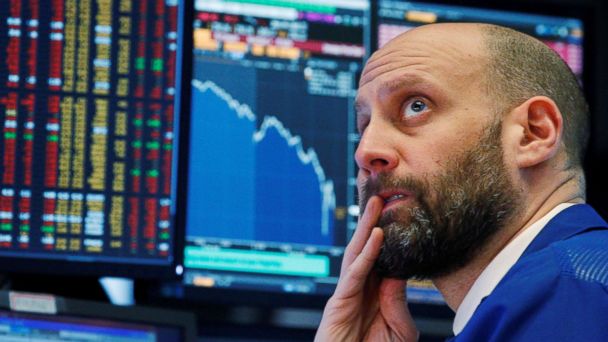It’s official – the market is near its all-time-highs once again. All the major indexes are topping out, and as a result, investors are starting to get nervous.
Especially those of us with a technical (as opposed to fundamental) mindset.
In a market that just won’t stop going up, it’s easy to rationalize buying at “the top”. But when you’ve just witnessed a major sell-off in the months prior, convincing yourself to take that risk becomes a much, much more stressful affair.
Buying (or even just holding) at around the apex of a “double top” formation – where a traded asset makes the second peak of an “M” shape on the charts – can test the fortitude of even the heartiest of traders.
But a year from now, investors who sold-off at this point could be kicking themselves for not riding the “rip-your-face-off” post-Christmas rally even further. It’s been a long, long time since we’ve seen this kind of action in such a short window, and those of us who don’t stay locked-in could be missing out on a “once in a decade” kind of bull run.
Or, on the other hand, the market could correct back down from here temporarily, and investors who escaped with their Q1 profits would end up feeling extremely wise…
…At least until the next time they get burned by a surprise Fed announcement, spoiling all the fun.
And it seems that now, after having enjoyed a historic rally to start off the year, traders are beginning to get nervous – increasingly so on Wednesday (yesterday), as the indexes entered unchartered, all-time-high territory.
BMO Wealth Management chief investment strategist Yung-Yu Ma, who was interviewed by MarketWatch earlier this week, has taken notice of the newly found investor “sheepishness”.
“The biggest thing we think hindering investors at this point is probably the belief among participants […] that the U.S. equity market is overvalued. We think it’s reasonably fairly valued,” said Ma, arguing that both U.S. stocks and emerging markets still deserve attention.
“That idea, that a lot of people are counseling a lot of people away from stocks because of valuations, is quite misguided.”
In this case, Ma is spot-on with his commentary. Until the market truly shows us evidence of a pullback on the charts, trying to predict its movement (without significant price action) will simply be an exercise in frustration.
But unlike myself, Ma is less concerned with what the market is showing us chart-wise. Instead, he bases his outlook on a comparison between the S&P 500 earnings yield (which gauges expected stock returns) and 10-year Treasury note yield.
When the S&P 500 earnings yield is lower than the 10-year Treasury note yield, stocks appear to be overvalued. If the reverse were to occur, stocks would then be considered undervalued.
Since 2003, the S&P 500 earnings yield has been higher than the 10-year Treasury note yield – suggesting that right now, equities are still a good value.
Simply because they’re beating-out the much-safer (and less aggressive) bonds.
And though that might seem like a no-brainer – especially when you consider long-term performance – there’s an elegance to this method’s simplicity. If the market starts to drop, or even just stagnate, then the S&P 500 earnings yield will do so as well, making bonds more attractive.
It’s essentially a way to decide where investors should park their money. After all, if bonds are doing better than equities – why not switch over?
It also plays directly into my own trading philosophy, which is to assume that you know absolutely nothing about the market. By trading only off what price action (and the market in general) is showing you, you’ll have a much better time than trying to predict what’s coming down the road.
Sure, you’ll get lucky from time-to-time, but in general, using what the charts give you will be far less frustrating. And yes, you’ll get burned as the indexes hit reversal points, but you’ll also capture tons of profits while other investors are sitting on the sidelines, waiting for the “next big meltdown”.
And who knows – a massive correction could absolutely still be on the horizon. But until I start to see signs of it on the charts, I’ll continue to trade like I always have, business as usual.








